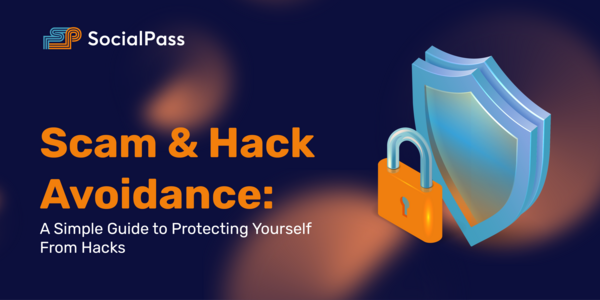A Simple Guide to Protecting Yourself From Hacks
In our previous article, we examined ways by which you can safeguard your digital assets from scammers. In this article, we will be talking about how to prevent yourself from being hacked.

Cryptocurrency hacks have risen significantly in tandem with the industry’s exponential growth. According to Chainalysis findings, hackers stole $1.3 billion in cryptocurrencies from exchange platforms and private entities in the first quarter of 2022.
Malicious cybercriminals are constantly devising new ways to gain unauthorized access to your digital assets daily. To avoid becoming a victim, you must learn how to protect your wallets and accounts.
Best Practices to Protect Your Cryptocurrencies
1. Use Multiple Wallets: Do not store all your cryptocurrencies in one wallet. For example, you can assign a specific wallet for daily transactions and a couple of others for storing your long-term portfolio of digital assets. Doing this can significantly reduce the impact of a hack.
2. Use a Secured Internet Connection: Public Wi-Fi or an unprotected internet connection can expose your sensitive information to hijackers. Make sure your internet connection is safe, and for additional security, utilize a VPN that will assist in cloaking your IP address.
3. Change Your Passwords Frequently: It is common for people to use the same simple password for multiple applications and accounts. This makes it easy for bad actors to figure out their passwords and access several accounts using the same password. Changing your password frequently will make you less vulnerable to hostile crypto hacks. You can also use two-factor authentication to improve the security of your wallet. Ensure your 2FA is not tied to your SIMs to avoid a SIM swapping hack.
4. Use a cold wallet: A cold wallet also reduces your security risk since it removes an attack vector hackers can use to gain access to your portfolio — an active internet connection.
5. Avoid clicking on phishing links: Hackers utilize suspicious links and pop-ups to access your digital wealth, so never click on them. Ensure you use the official website to avoid fake websites.
Taking these precautions can assist in reducing your cryptocurrency’s vulnerability to attackers. Despite this, you must prepare a backup plan. You’ll need to act quickly to mitigate the damage of an unauthorized transaction in your crypto account or wallet.
Here are some tips to help:
1. Transfer your funds: Hackers may sometimes not completely wipe your funds from your wallet. If you’re still lucky enough to have funds in your wallet, quickly transfer them to a different one to avoid losing everything.
2. File a complaint with the wallet or exchange authorities: Notifying the relevant authorities along with available evidence could aid in the recovery of your funds and the resolution of the problem. Reported complaints can also help wallet and exchange service providers quickly patch their security holes.
3. Reset your password: To avoid further security threats, you should change your password and use more security options such as two-factor authentication.
4. Run a malware scan: Malware is sometimes hidden in an application pretending to be a legitimate program. Therefore, a regular system scan is essential in detecting harmful software and limiting one’s vulnerability to unwanted intrusions.
